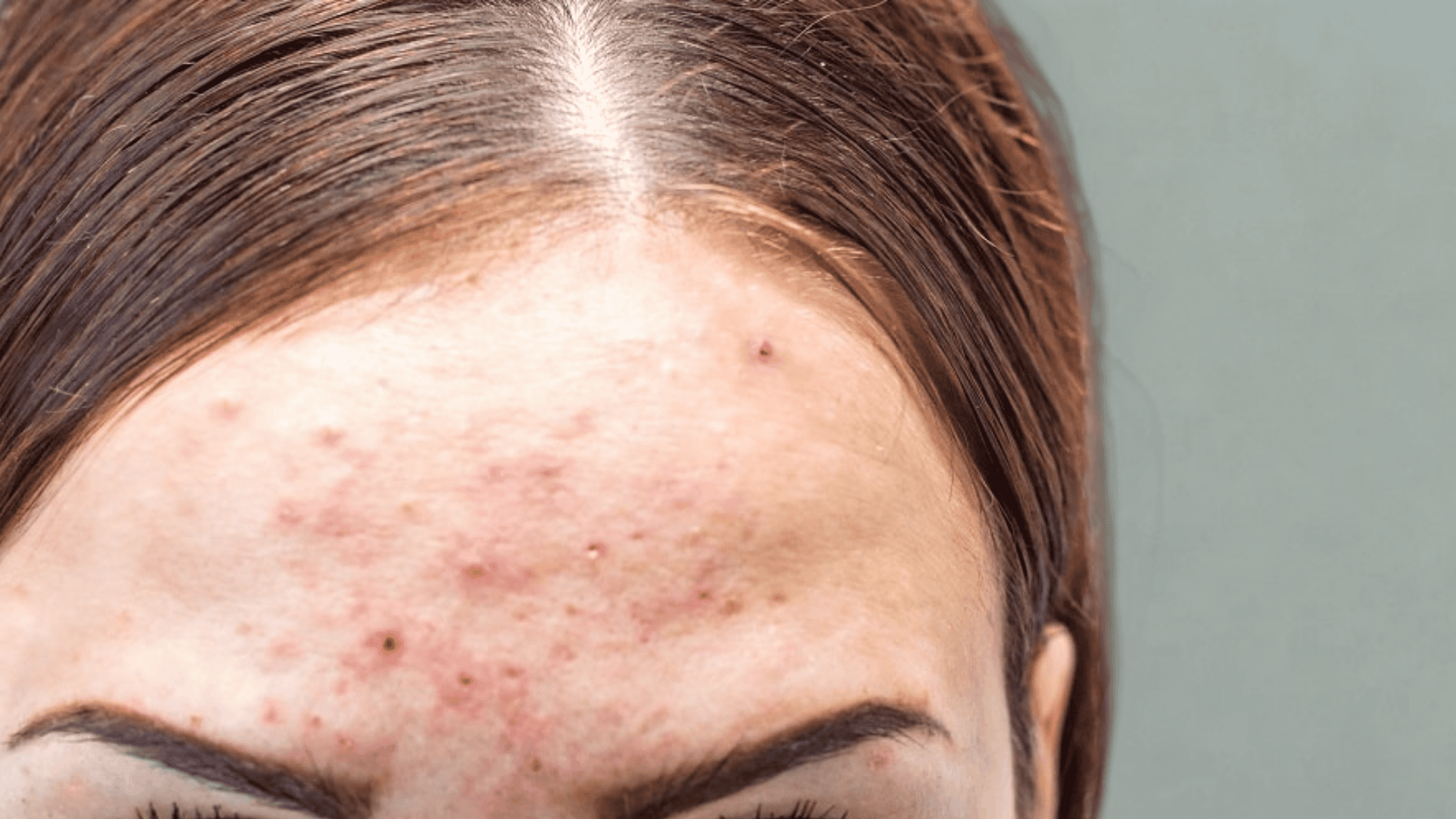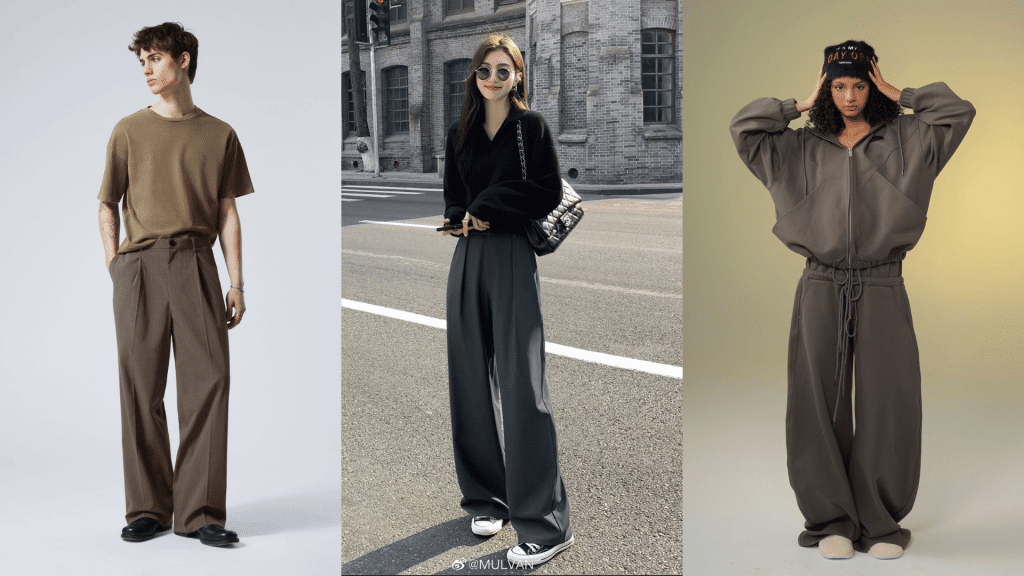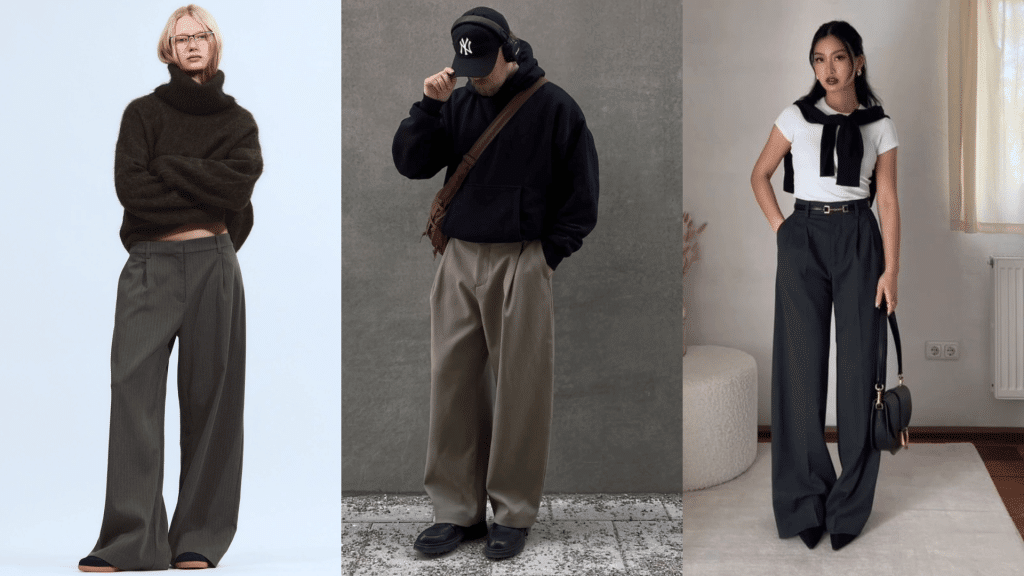Struggling with stubborn forehead acne that just won’t go away? I totally understand; those annoying bumps and breakouts, right where everyone can see them, are incredibly frustrating.
If you’re dealing with small whiteheads, painful cystic bumps, or red, inflamed spots across your forehead, you’re not alone in this battle.
I’ve been there too, staring in the mirror, wondering why my forehead seems to be a magnet for acne.
The good news? There are proven ways to clear up those pesky bumps and prevent new ones from popping up. From simple skincare swaps to targeted treatments,
I’m here to share the most effective methods that actually work for getting rid of forehead acne for good.
What Does Forehead Acne Mean in Skin Health?
What does forehead acne mean for your skin health? It occurs when pores on the forehead become clogged with oil, dead skin cells, and bacteria.
The forehead, part of the T-zone, naturally produces more oil, creating ideal conditions for acne-causing bacteria. Several factors contribute to forehead breakouts.
Hormonal changes, such as those during puberty or pregnancy, can increase oil production. Hair products with oils or silicones can also clog pores when transferred to the forehead.
What does forehead acne mean compared to other facial breakouts? It is often more persistent due to constant contact with hair, hands, and accessories like hats.
The forehead also faces more exposure to sweat and environmental pollutants.
Understanding how to get rid of bumps on the forehead involves addressing both internal factors and external triggers. A consistent skincare routine is essential to keeping pores clear and managing forehead acne effectively.
Types of Forehead Acne
Not all forehead acne is created equal. Different types of breakouts require specific treatment approaches to achieve the best results.
Understanding which type you’re dealing with helps determine the most effective strategy for clearer skin.
1. Hormonal Acne
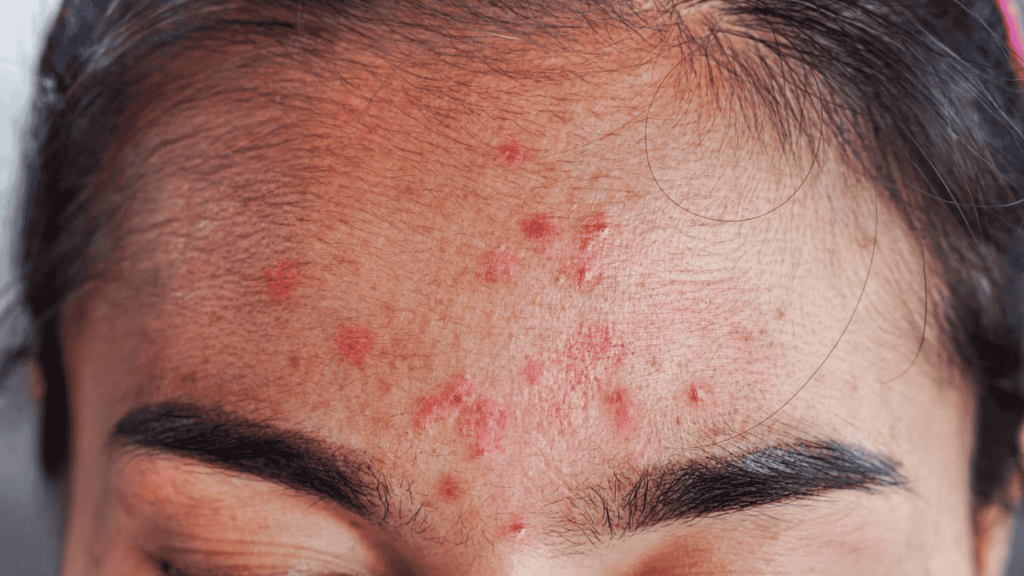
Hormonal acne on the forehead often occurs during teenage years, menstrual cycles, or stressful times, usually along the hairline and upper forehead.
It’s caused by hormone fluctuations that trigger excess oil production. Treating it involves gentle cleansing twice daily and using salicylic acid or benzoyl peroxide for the best results.
2. Cystic Acne<
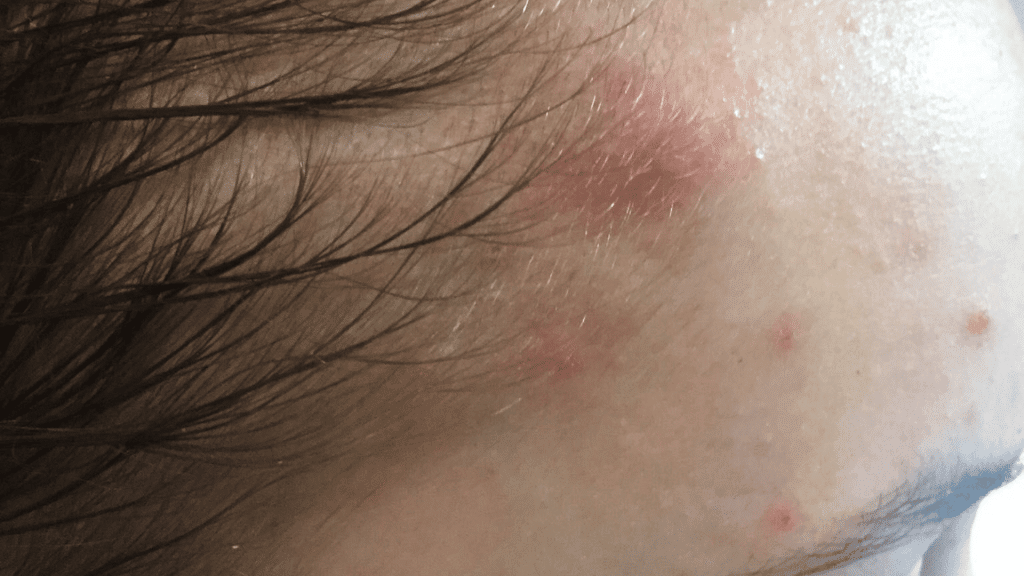
Cystic forehead acne is a severe breakout, forming deep, painful lumps under the skin that can last weeks. It occurs when infections develop deep within hair follicles.
Treating cystic acne often requires professional help. Avoid squeezing or picking at it, as this can worsen inflammation and cause scarring. Apply ice for swelling relief.
3. Comedonal Acne
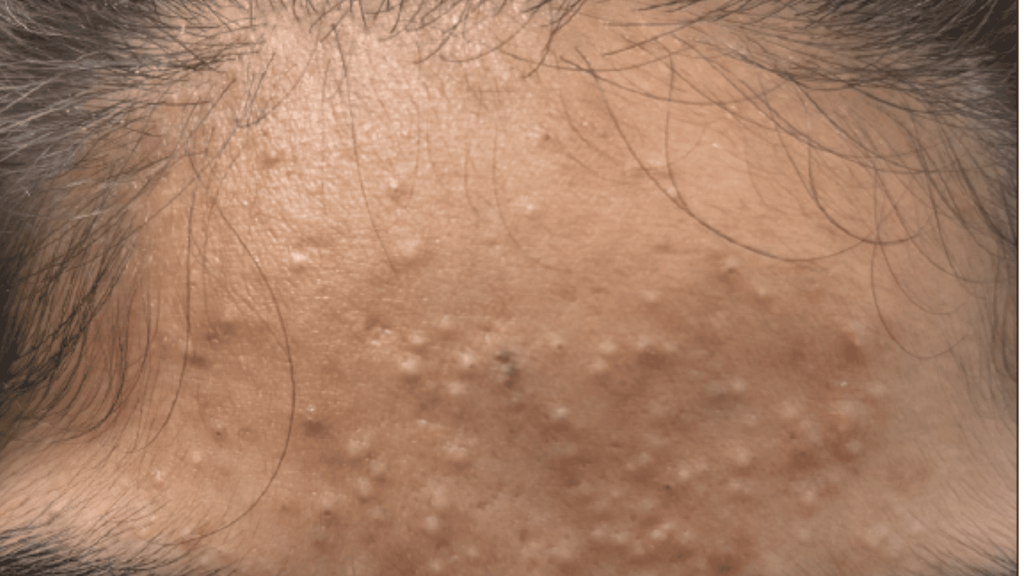
Comedonal acne appears as small bumps or blackheads on the forehead, caused by clogged pores with oil and dead skin cells. Regular exfoliation is key to preventing blockages.
This type responds well to retinoids and alpha hydroxy acids for how to get rid of forehead acne. Consistent use of these ingredients clears pores and prevents new breakouts.
4. Pustules & Papules
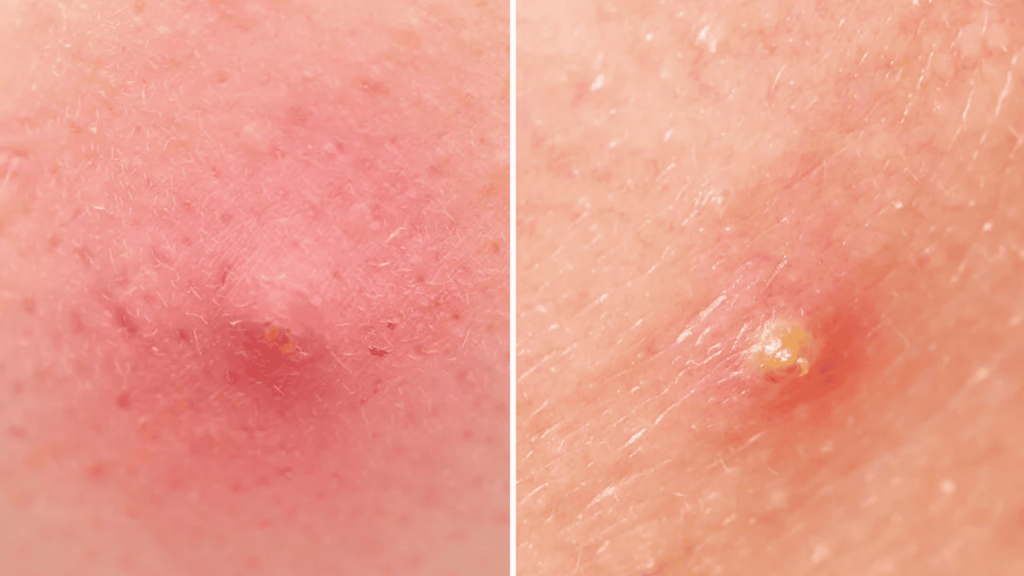
Pustules are white or yellow bumps filled with pus, while papules are small, inflamed red bumps without visible heads. These types result from bacterial infections in clogged pores, causing inflammation.
Anti-inflammatory treatments are necessary, with benzoyl peroxide being effective for pustules by killing acne-causing bacteria.
Once you know what you’re dealing with, you can choose targeted approaches that address the root cause rather than just treating symptoms.
Remember, some people may have multiple types at once, so don’t hesitate to combine treatments.
Effective Treatments for Forehead Acne
When forehead acne becomes persistent, it’s time to bring in the big guns. These proven treatments range from gentle over-the-counter options to professional procedures.
- Salicylic Acid Products : These products help clear blackheads and whiteheads by going deep into the pores to remove oil and dead skin. Start with a 0.5% concentration and gradually increase to 2% to avoid irritation as your skin gets used to it.
- Benzoyl Peroxide Treatments: Benzoyl peroxide kills acne-causing bacteria. Begin with a 2.5% concentration to avoid dryness and redness, while still seeing good results.
- Retinol Products: Retinol helps accelerate skin cell turnover, preventing dead skin cells from clogging pores. These are important for clearing forehead acne and work best if used regularly over several months.
- Topical Retinoids (Prescription): Prescription retinoids, such as tretinoin, are stronger than over-the-counter versions and help clear pores. These should be introduced slowly and monitored by a dermatologist to prevent potential side effects.
- Oral Medications: For more severe acne, dermatologists might recommend isotretinoin (Accutane), which reduces oil production. Antibiotics may also be prescribed for acne that doesn’t improve with topical treatments.
- Light Therapy: Light therapy utilizes LED or other types of light to eliminate acne-causing bacteria and reduce inflammation. Multiple sessions are required, but the treatment is gentle and non-invasive.
Effective treatment needs patience and consistency. Begin with gentle options and escalate if necessary. The key is finding a sustainable long-term routine.
Simple Home Remedies That Actually Work
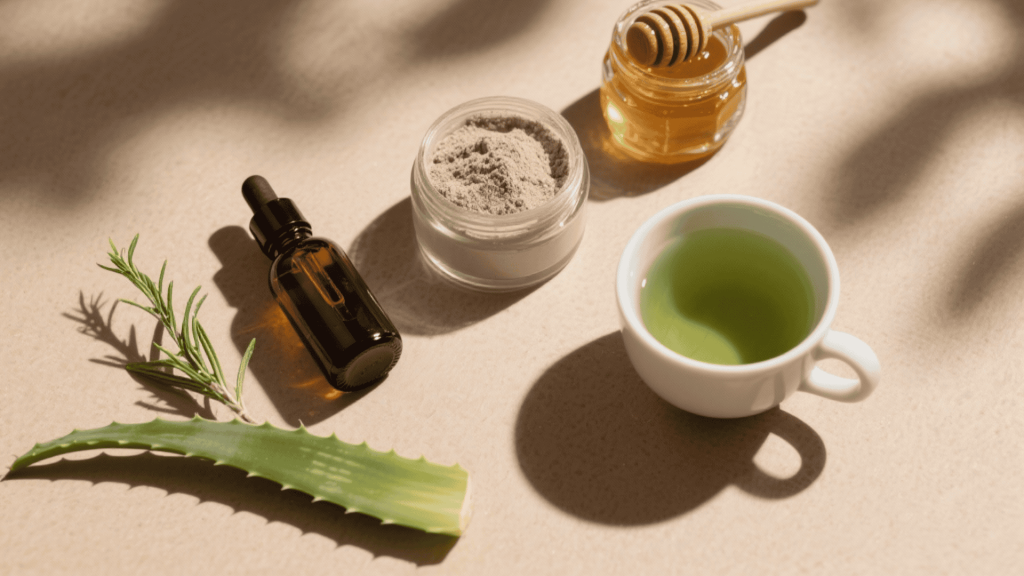
Sometimes the best solutions are right in the kitchen or medicine cabinet. These natural approaches can complement skincare routines without costing much.
Remember, natural doesn’t always mean risk-free, so patch test everything first.
1. Tea Tree Oil Treatment
Tea tree oil is nature’s antiseptic. Mix a few drops with water (never use it straight!) and dab it on problem spots. It kills bacteria without the harsh side effects of stronger treatments.
Start slowly, use it every other day to see how your skin reacts. If redness or irritation appears, dilute it more or skip this remedy entirely.
2. Clay Masks for Oil Control
Clay masks are like magnets for excess oil and dirt. Bentonite clay and kaolin clay work particularly well for oily, acne-prone foreheads.
Mix the clay powder with water to form a paste, apply it to the forehead, and let it dry for 10-15 minutes. Rinse with lukewarm water and follow with a light moisturizer.
3. Aloe Vera for Soothing Relief
Fresh aloe vera gel straight from the plant works wonders for inflamed skin. It reduces redness and provides gentle moisture without clogging pores.
In the absence of an aloe plant, look for pure aloe vera gel without added fragrances or colors. Apply a thin layer and let it absorb completely.
4. Green Tea Compress
Brew some green tea, let it cool completely, then soak a clean cloth in it. Press the cloth gently against the forehead for 5-10 minutes.
Green tea contains antioxidants that help calm inflammation. Plus, it’s incredibly gentle and suitable for sensitive skin types.
5. Honey Spot Treatment
Raw honey has natural antibacterial properties and won’t dry out your skin. Dab a small amount on individual pimples before bed and rinse off in the morning.
Look for raw, unprocessed honey rather than the regular stuff from the grocery store. Manuka honey is especially effective, though it’s pricier.
These home remedies work best when used consistently and patiently. Don’t expect overnight miracles, but with regular use, gradual improvement is visible. Always patch test new ingredients on a small area first to avoid unexpected reactions.
Preventative Measures to Avoid Forehead Acne
Prevention is better than treatment for acne. These lifestyle changes can greatly lower forehead breakouts and improve overall health.
- Hair products like shampoos and gels can transfer to the forehead while sleeping. Rinse hair products thoroughly and avoid applying them near the hairline.
- Foods like white bread and sugary snacks can spike insulin levels, leading to more oil production. Try eating fewer refined carbs and added sugars.
- Foods like leafy greens, fatty fish, and berries support healthy skin and can reduce acne.
- Stress triggers hormones that increase oil production. Regular exercise, meditation, or deep breathing can help keep stress under control.
- Drinking enough water helps maintain healthy skin and prevents excess oil production. Aim for at least 8 glasses of water a day.
Small changes in your daily routine can make a big difference in preventing forehead acne. Consistency is key as these preventative measures work best when practiced regularly over time.
Common Myths about Forehead Acne
Several persistent myths surround forehead acne treatment, often leading people down ineffective paths.
Myth: Chocolate and greasy foods directly cause breakouts.
Accuracy: While high-glycemic foods may trigger acne in some, there’s no direct link to chocolate and forehead acne.
Myth: Harsh scrubbing and aggressive washing clear acne faster.
Accuracy: Over-cleansing strips natural oils and can worsen breakouts.
Myth: Sun exposure improves acne by “drying out” pimples.
Accuracy: UV rays may reduce inflammation temporarily, but sun damage can worsen clogged pores.
Myth: Makeup always causes acne.
Accuracy: Non-comedogenic makeup and proper removal techniques prevent breakouts.
Myth: Acne is purely a teenage problem.
Accuracy: Adult acne affects millions and requires the same treatment approach.
Myth: Quick, harsh treatments cure forehead acne faster.
Accuracy: Consistent, gentle care is key; most treatments take 6-12 weeks to show results
Everyone’s skin responds differently to treatments. What works for one person may not work for another, making it essential to find personalized solutions for eliminating forehead acne.
Conclusion
Getting rid of forehead acne doesn’t have to be a never-ending battle. I’ve shared the most effective treatments and prevention tips that really work, from gentle cleansing routines to targeted spot treatments.
Consistency is key for forehead bumps. Start with one or two methods and be patient. Most people experience improvements within 4-6 weeks; however, consult a dermatologist if acne persists.
You deserve clear, healthy skin, and with the right approach, forehead breakouts can be solved. What’s worked best for your acne? Share your success stories below!

